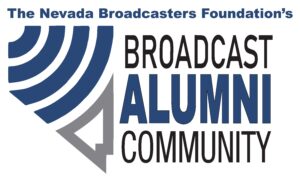Broadcasters have an impact of $14.11 billion annually on Nevada’s economy.*
$14,260,596
Charitable Contributions
$4,856,559
Disaster Relief
$52,507,977
Donated Airtime
29,765
Local Radio & TV Jobs
Members in the Community
‘Fill The Bus’ annual school supply drive hopes to help thousands of students in need
The Communities In Schools of Southern Nevada's 11th annual Fill the Bus school supply drive is back! This partnership with News 3 and 97.1 The Point aims to ease the financial burden of buying school supplies and clothing for roughly 60,360 students.
What’s Happening
Public Service and Outreach

Public Education Program
The most cost efficient means of outreach available for non-profit organizations and government agencies through our member stations.
In the News
-
11 States Now Have Laws Limiting Artificial Intelligence, Deep Fakes, and Synthetic Media in Political Advertising – Looking at the Issues
Artificial Intelligence was the talk of the NAB Convention last week. Seemingly, not a session took place without some discussion of the impact of AI. One area that we have written about many times is the impact of AI on political advertising. Legislative consideration of that issue has exploded in the first quarter of 2024,… .
-
This Week in Regulation for Broadcasters: April 15, 2024 to April 19, 2024
Here are some of the regulatory developments of significance to broadcasters from this past week, with links to where you can go to find more information as to how these actions may affect your operations. The FCC announced several dates and deadlines in proceedings of importance to broadcasters: The FCC announced that May 16 is… .
-
FCC Proposes $8000 Fine for Failure to Award $396 Prize Within Time Period Set Out in the Contest Rules
Last week, the FCC’s Enforcement Bureau issued a Notice of Apparent Liability proposing an $8000 fine on a Los Angeles radio broadcaster that did not award a contest prize until over a year after the contest rules called for the prize to be delivered. The contest rules called for the prize to be awarded within… .
-
This Week in Regulation for Broadcasters: April 8, 2024 to April 12, 2024
Here are some of the regulatory developments of significance to broadcasters from the past week, with links to where you can find more information as to how these actions may affect your operations. The debate over the AM for Every Vehicle Act intensified this week, with the Wall Street Journal’s Editorial Board publishing an article… .
-
On the Eve of the NAB Convention, Wall Street Journal Editorial Board Article Opposes AM in Every Vehicle Act
With broadcasters and those in associated industries ready to make their annual pilgrimage to Las Vegas for the NAB Convention, the Wall Street Journal decided to weigh in on an issue important to many radio broadcasters – the future of AM in the car. One of the priorities for many AM broadcasters in the last… .
-
FCC Approves Origination of Programming on FM Boosters to Facilitate Geocasting – Targeting Different Ads or Programming to Different Parts of FM Station’s Service Area
Last week, the FCC approved a long-pending request by GeoBroadcast Solutions to allow FM boosters to originate limited amounts of programming that is different from what is broadcast on the booster’s primary station. Boosters operate on the same channel as an FM broadcast station and have traditionally been used to fill in holes in an… .




